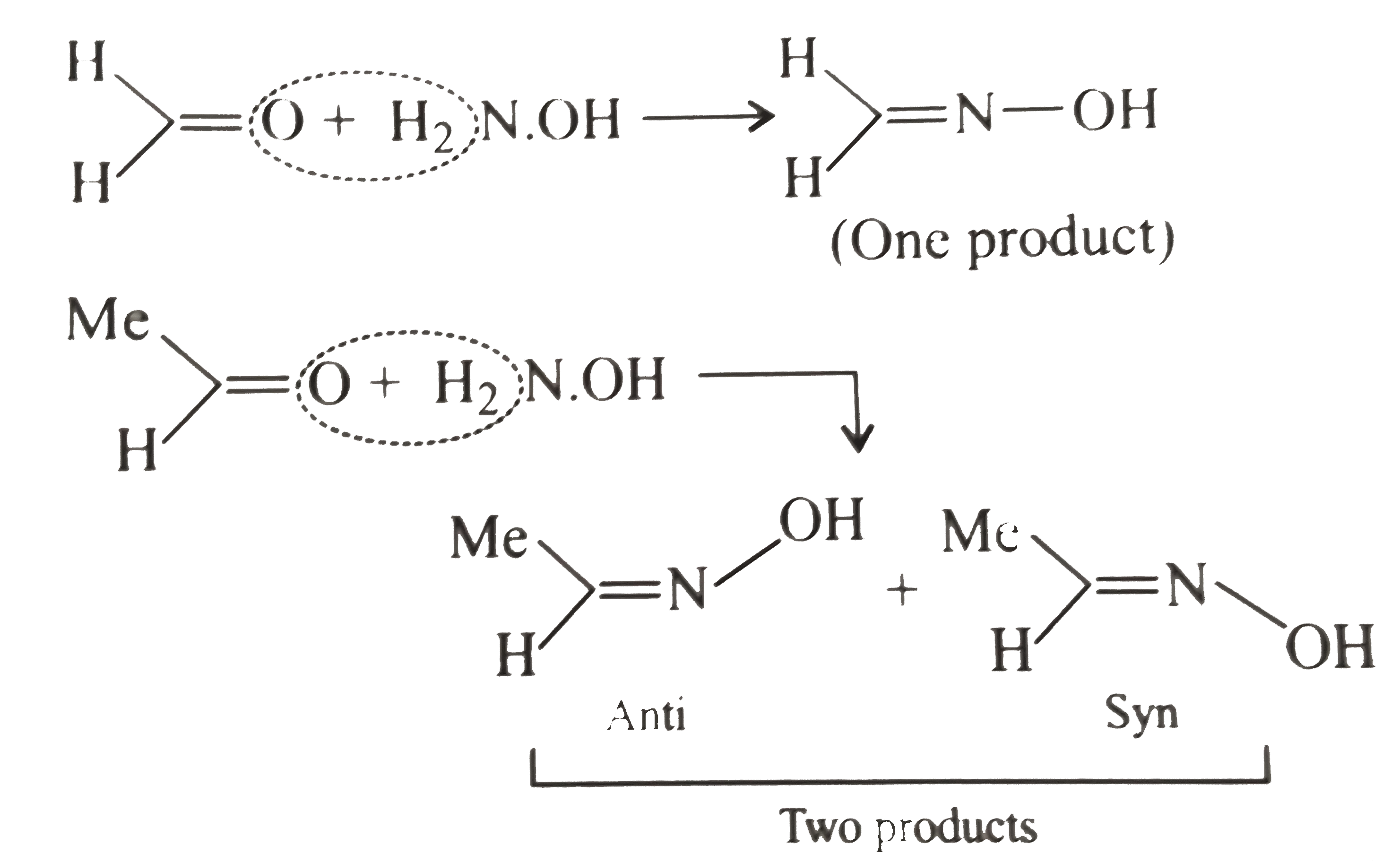The smallest aldehyde and its next homologue are treated with NH2OH to form oxime. Find out the correct answer out of the following.
A
Two different oximes are formed
B
Three different oximes are formed.
C
Two oximes are optically active.
D
All oximes are optically active.
Video Solution
Text Solution
The correct Answer is:B
Smallest aldehyde is (CH2=O) and the next homologue is (MeCHO).

Total three oximes are obtained.
|
Topper's Solved these Questions
- ISOMERISMBook:CENGAGE CHEMISTRYChapter:ISOMERISMExercise:Assertion-Reasoning Type (Exercise)
Explore 5 Videos
- ISOMERISMBook:CENGAGE CHEMISTRYChapter:ISOMERISMExercise:Fill in the blanks (Exercise)
Explore 3 Videos
- ISOMERISMBook:CENGAGE CHEMISTRYChapter:ISOMERISMExercise:Single correct answer type
Explore 13 Videos
- IONIC EQUILIBRIUMBook:CENGAGE CHEMISTRYChapter:IONIC EQUILIBRIUMExercise:Archives Subjective
Explore 28 Videos
- NCERT BASED EXERCISEBook:CENGAGE CHEMISTRYChapter:NCERT BASED EXERCISEExercise:Chemical Equilibrium
Explore 72 Videos
Similar Questions
Knowledge Check
The smallest ketone and its next homologue are reacted with NH2OH to form oxime.
Atwo different oximes are formedBthree different oximes are formedCtwo oximes are optically activeDall oximes are optically activeThe smallest ketone and its next homologue are reacted with NH2OH to form oxime.
ATwo different oximes are formedBThree different oximes are formedCTwo oximes are optically activeDAll oximes are optically activeThe smallest ketone and its next homologue are reacted with NH2OH to form oxime.
ATwo different oximes are formed.BThree different oximes are formed.CTwo oximes are optically active.DAll oximes are optically active.
The smallest ketone and its next homologue are reacted with H2NOH to form oxime
View SolutionFind out the incorrect answer from the following ?
View SolutionFind out the correct statement from the following:
View SolutionThe smallest ketone and it's functional isomere are reated with NH2−OH to form oxime
View SolutionFind out the correct statements among the following
View Solution
